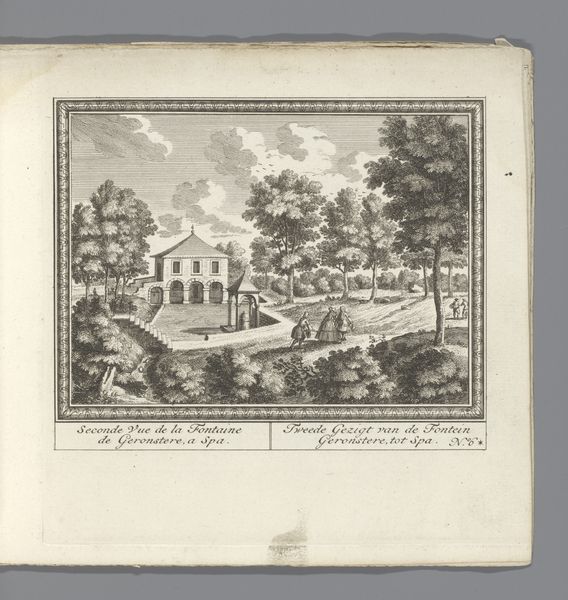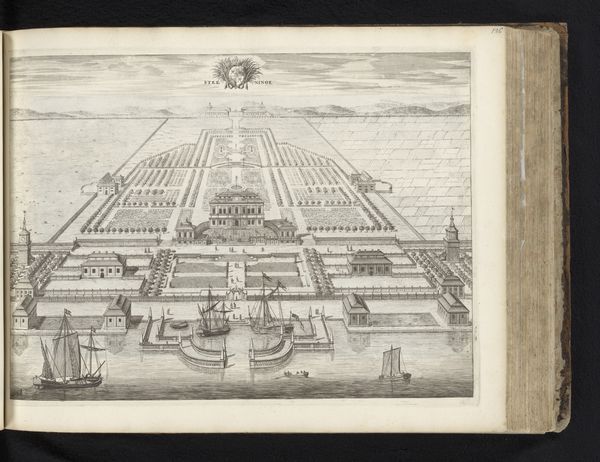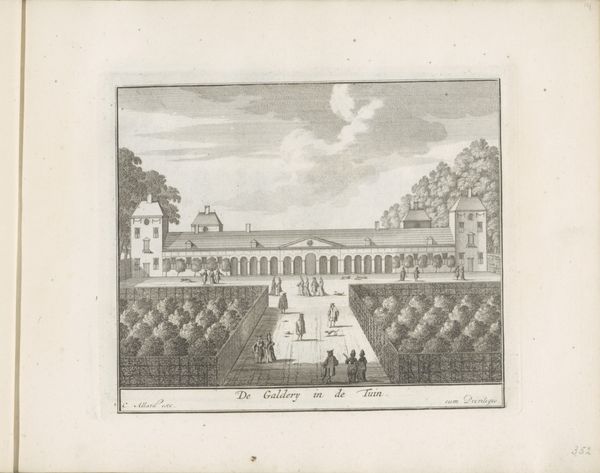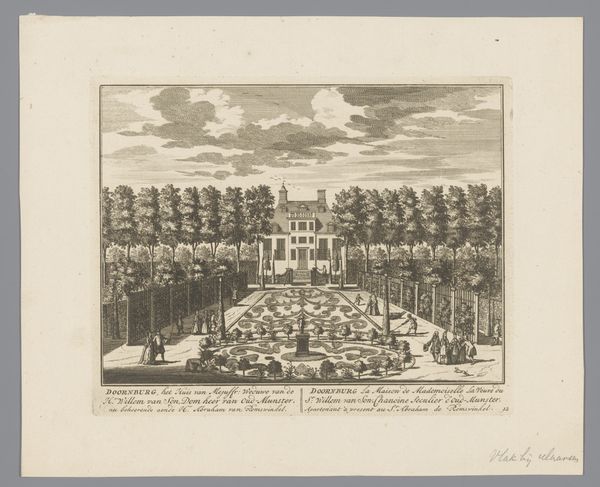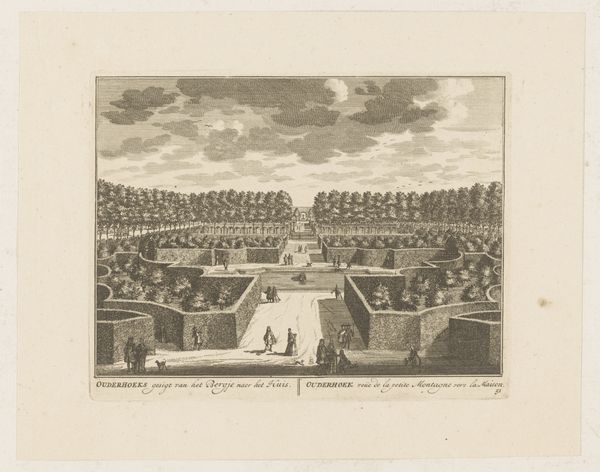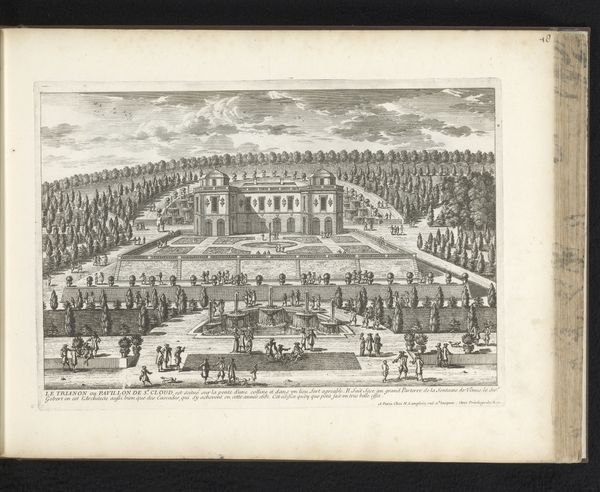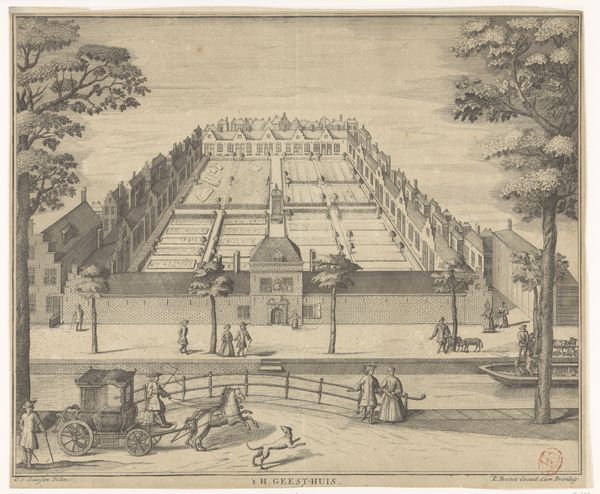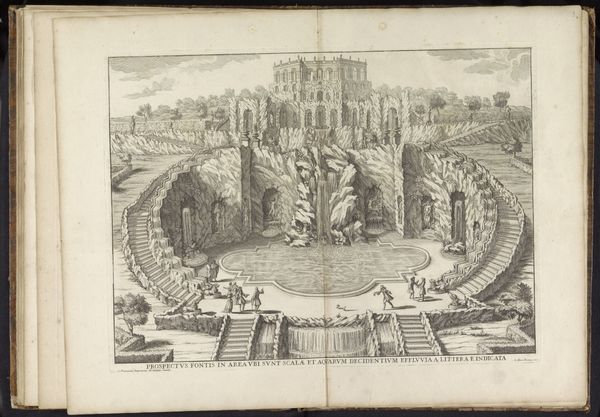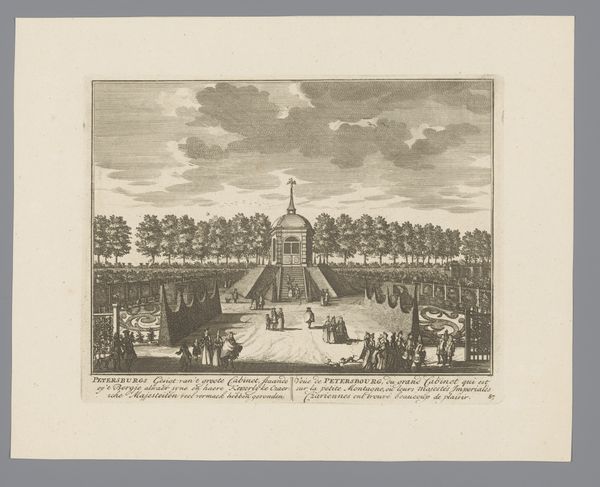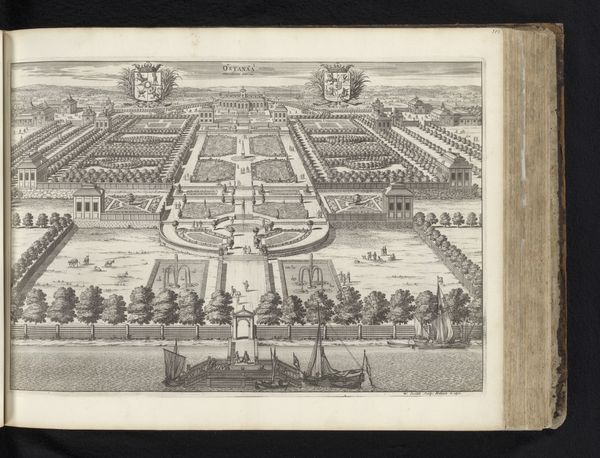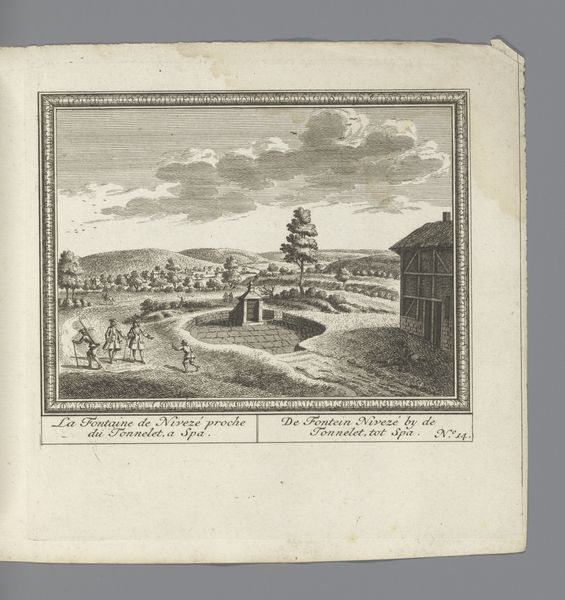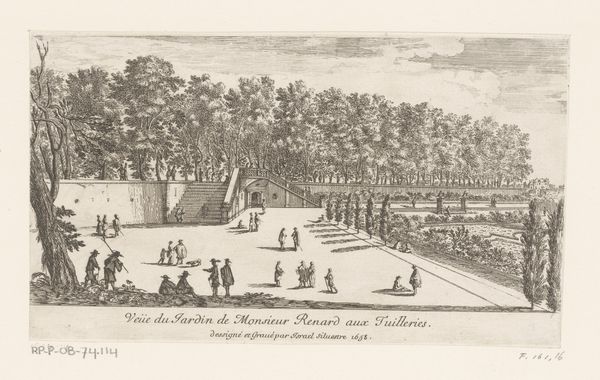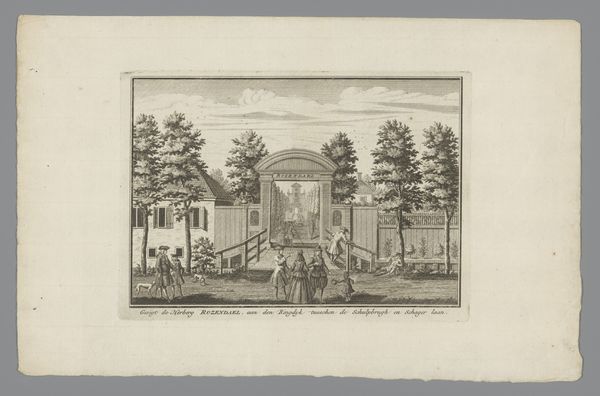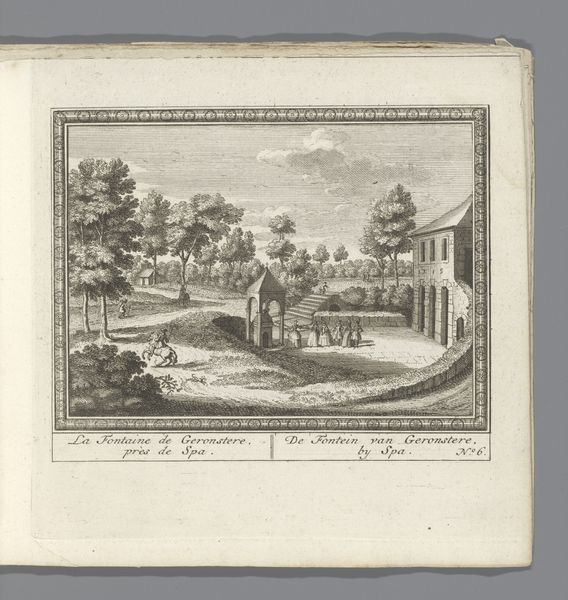
print, engraving
#
baroque
# print
#
landscape
#
cityscape
#
engraving
Dimensions: height 172 mm, width 198 mm
Copyright: Rijks Museum: Open Domain
Editor: This is "View of the Garden of the Capuchin Monastery in Spa" from 1734. It's an engraving. It feels very controlled, very precise. What catches your eye when you look at it? Curator: What interests me immediately is the *means* of production: engraving. This wasn't a spontaneous sketch, but a deliberate, crafted image. Think about the engraver, the tools they used, the time spent meticulously carving those lines. Editor: So you're focused on the physical act of creating it. Curator: Exactly. And consider the social context. Prints like this circulated widely. This image depicts leisure. Who was buying it? Who could afford the time and money to enjoy gardens like this, or to purchase prints of them? Editor: So it speaks to class and consumption? Curator: Precisely. We see this ordered, man-made garden imposed upon the landscape. What was the impact of monasteries like this on land use? This print is both an image *of* something, but also a commodity *itself*. What are its production values telling us about labour, time, skill, and luxury at this historical moment? How can we question conventional divisions between art and craft here? Editor: That’s fascinating. I never considered the social implications embedded in the engraving process itself. Curator: By looking at the material, we see much more. We uncover the social relationships embedded in its creation. The lines might depict leisure, but they were made through intense labour. Editor: Thanks. I see how closely linked materials, process, and social class can be when considering art. Curator: Indeed. It urges us to move beyond mere aesthetics and analyze production.
Comments
No comments
Be the first to comment and join the conversation on the ultimate creative platform.
